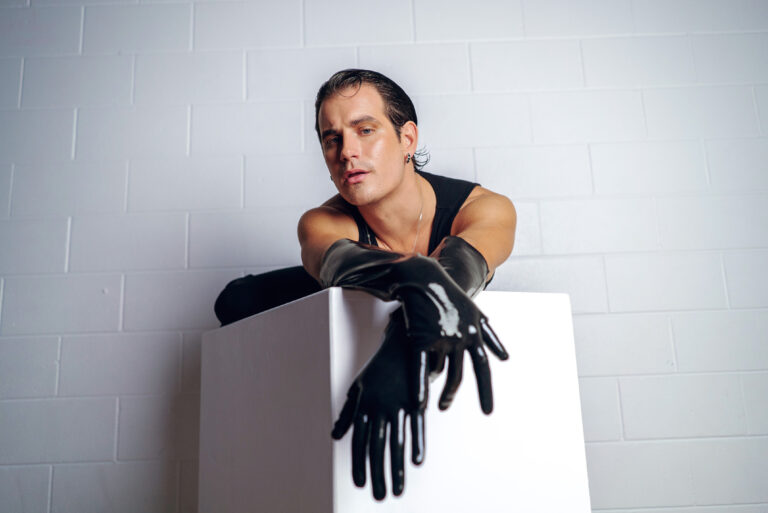Juan Carlos Peñuela’s Level 5 technique class at Ballet Hispanico in New York City runs like a friendly laboratory with one clear mission: for students to discover the power of the standing leg. His first correction of the day takes the form of an experiment. Peñuela has student Lisette Fischer demonstrate the wrong way to take a tendu into fondu (tail sticking out), followed by the correct version, where she keeps her hips and ribs aligned over her standing leg as the knee bends. “Did you see?” he quizzes her. For Peñuela, knowing is not the same thing as feeling. Alignment is “not imitation; the main thing is to feel the position.”
As barre progresses into more difficult combinations with syncopated rhythms and constant transfers of weight, Peñuela maintains his focus. He repeatedly returns to that first correction and asks the room, “Where do you initiate grands battements?” Though a student eventually comes up with the answer he is looking for—the standing leg—Peñuela is not convinced. “Sometimes dancers just go through the motions; they just make shapes without feeling it. But if dancers can feel their technique, they get better.”
Peñuela and Ballet Hispanico use the syllabus of the Cuban style, which combines classical Vaganova training with Latin flair and artistry. He believes the hybrid technique builds strong dancers and that strength helps them better avoid injuries. But just as important to Peñuela is that the Cuban tradition breeds a “quality of movement that is bigger, less stuck on the square.”
In the center, the lush combinations take up several bars of music. The waltzes travel to every corner of the studio and the petit allégro begins at warp speed. The transitions are quick and leave little time to sit in positions.
Peñuela stands in the front of the room, head held high, and watches as the students in this top-level pre-professional class jump and turn with ability. He smiles affectionately as he shakes his head no. He cultivates a warm rapport with his students, and his corrections, however humorous, are never harsh. “One level is boring,” he says as he draws a flat line in the air with his hand and hums one note. The dancers laugh. Though the class is definitely giving adequate attention to his alignment cues, Peñuela still wants to see something more: “Let me see the energy move through your fingernails out to the universe.” DT
Candice Thompson danced with the Milwaukee Ballet Company and is a graduate writing fellow at Columbia University.
Juan Carlos Peñuela began the first three years of his dance training with Russian teachers in his native Colombia. Then Cuban ballet masters arrived, and for the next 10 years he was schooled in the Cuban style. He joined Colombia’s national company, Ballet de Cali, as a principal before moving to the United States. He danced for several American companies, including Ballet Arizona, Pennsylvania Ballet and Dance Theatre of Harlem, where he got his first taste of the Balanchine technique. Additionally, he received his Pilates certification in NYC from Romana Kryzanowska and says that the method has helped him refine his eye for alignment. His teaching style, as ballet master of Ballet Hispanico for the last five years, layers this diverse experience on top of the Cuban-style syllabus.
Lisette Fischer, 15, is an advanced pre-professional student at Ballet Hispanico.
Photography by Kyle Froman



